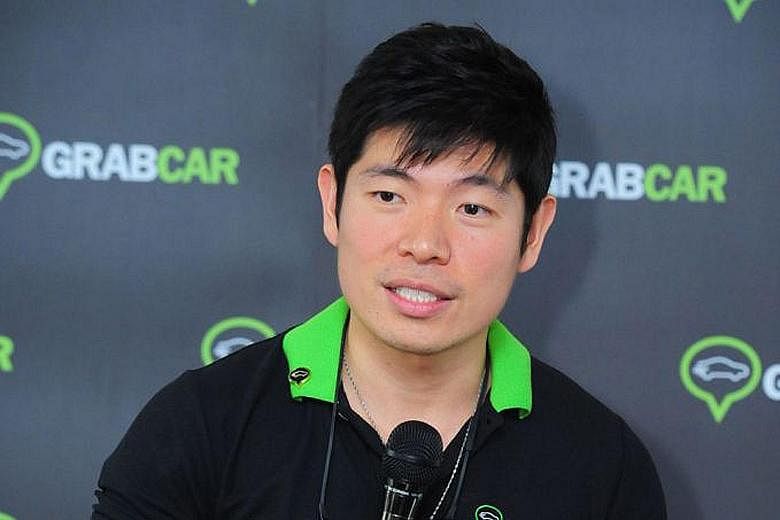RAPID RISE
Grab, which launched in 2012, has become the largest ride-hailing firm in South-east Asia in just a few years, operating across eight countries in the region, and Japan.
It is now a household name in the fast-growing region of 650 million people, where it also provides food delivery and financial services. Japan's SoftBank is a key investor.
BUSINESS SCHOOL PROJECT
Grab started life when Mr Anthony Tan, who came from a family that ran a successful car sales business in Malaysia, hit on the idea of a taxi-booking app.
He turned his idea into a project while studying at Harvard Business School and, in 2011, it won a school contest. He quit his job at the family business the following year and launched the app, GrabTaxi, in Malaysia with a Harvard classmate.
It quickly gained popularity across South-east Asia and expanded from taxis to private cars and motorbikes. The company moved its headquarters from Malaysia to Singapore in 2014.
In 2018, Grab cemented its position as South-east Asia's biggest ride-hailing firm when it bought Uber's operations in the region, ending a battle for market share with its United States-based rival.
Uber received a 27.5 per cent stake in Grab in exchange.
BEYOND RIDE-HAILING
Grab's food business started in 2016 but got a boost following its acquisition of Uber's South-east Asia operations. When the pandemic hit last year, Grab's food delivery business boomed as people relied on takeaways.
As the transport business suffered, earnings from food delivery soared and now account for more than half of revenues, according to company executives.
Grab has also expanded into financial services like digital payments, and has been granted a licence to launch a digital bank in Singapore as part of a consortium.
"Grab could potentially expand its fintech business in South-east Asia due to a larger base of population being underserved by the traditional banking system," said Mr Kevin Koh, an associate professor at the business school of Nanyang Technological University.
Grab also offers a raft of consumer products, including loans and health insurance.
HARVARD RIVALS
Grab's main competitor is Gojek, an Indonesia-based app that provides services including ride-hailing, deliveries, takeaway food and financial services. Gojek - founded by Mr Nadiem Makarim, a friend of Mr Tan's from Harvard - has attracted investments from tech giants including Google, Facebook and Tencent.
'PRESTIGIOUS' NEW YORK LISTING
Grab plans to go public through a merger transaction, the latest instance of a prominent company combining with an entity specifically established by investors for such a merger - a so-called "special purpose acquisition company".
Market participants say such deals are faster and less costly to execute than traditional share sales known as initial public offerings, or IPOs.
As for listing in New York, Prof Koh said advantages include "access to a wider shareholder base, higher liquidity, cheaper cost of capital and - to a certain extent - higher prestige since the US stock market is the largest in the world".
AGENCE FRANCE-PRESSE

